|
|
|
|
Kris Kjeldsen - Waterman |
|
|
How do I pay tribute to someone I barely knew? It's the question I've been asking
myself ever since I learned of Kris Kjeldsen's death. After all. he died on
the 30th of June and I only learned of it
six weeks later. |
|
|
Kris and I had so much in common. So many similar experiences. So many mutual friends and
acquaintances. We were even close in age. So it's surprising that we'd never met before.
|
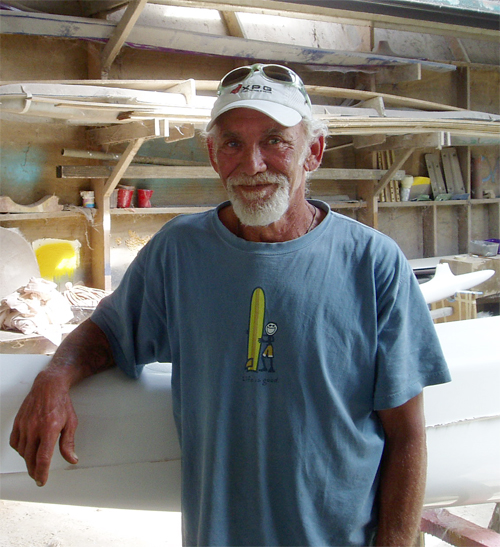 Kris in his factory November 2005 - photo Bob Feigel |
|
Even though we'd just met we hit it off immediately. Like two old water-brothers who'd known each other for
years.. There was so much left to learn about each other and on parting we made vague promises to get together again. But fate intervened.
|
|
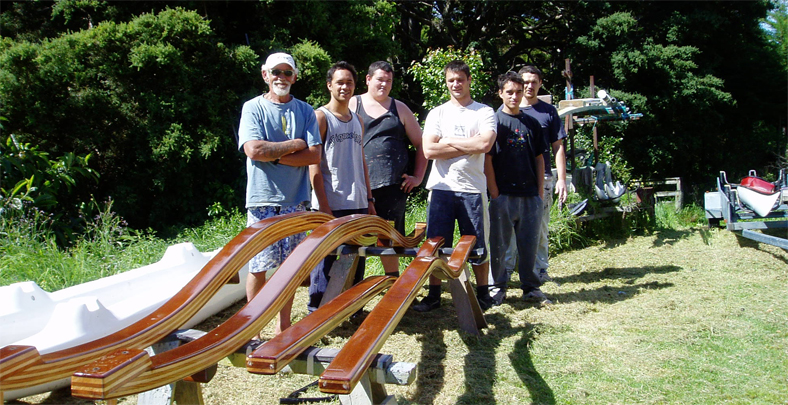 Kris and his team at Moana Nui in 2005 - photo Bob Feigel |
|
|
Strangely, the week before I learned of Kris's death, I dreamed of him. In the dream we spoke about old times and it was like we were finally catching up.
Over the years I've learned to respect dreams like that even though I
might not realize their significance at the time.
|
|
DIFFERENT STROKESWhen SCENE Central started getting reports of UFO sightings along the Tutukaka Coast we sent Matapouri writer, Bob Feigel, to investigate. His mission: to discover the source of these Unusual Floating Objects. Snuggled in a corner of a steep valley beside the narrow road that snakes over the hill from Tutukaka and down into Matapouri, there's a secret. Stumped? Well ... while it's known by various names in different cultures and languages, in Maori it is the ancient sport of paddling Waka (canoe) Ama (float) - or outrigger canoe. And in case you haven't noticed, the number of people paddling outriggers for fun, fishing or racing them competitively has been increasing in New Zealand ever since 1985, especially in Northland.
|
|
|
Much of the credit for the NZ revival of Waka Ama paddling and its continuing growth is due to the efforts of Ngunguru resident Kris Kjeldsen, who, with his wife Alamein, run Moana Nui Polynesian Canoes and Paddles. |
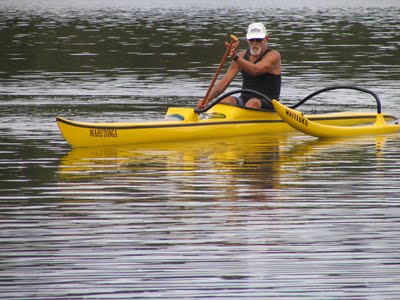 Kris paddling a Moana Nui waka ama |
|
"I was living in the small village of Pawarenga on the Hokianga and wondered why there was no traditional Maori canoe racing," says Kris. "Then, I read about Hawaiki Nui, the replica Polynesian voyaging canoe being built by Matahi Whakataka (master builder) Brightwell, who sailed it from Tahiti to New Zealand. I was there at Okahu Bay in Auckland when it landed in December 1985."
|
|
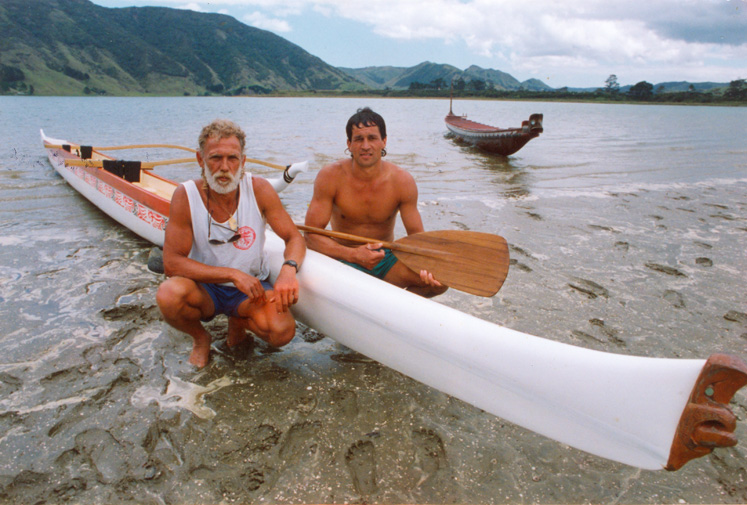 Kris Kjeldsen (left) and Bo Herbert. Pawarenga, Hokianga, Northland, 1989. With prototype of the "1990 Design" canoe and a Waka Tete (fishing canoe) in background. Kris and Bo were the co-designers of the "1990" model W6 (six person) canoe that was used in the 1990 IPCF (International Polynesian Canoe Federation) World Championships held in New Zealand. Sadly, Bo was killed in a farming accident several months before the interview. |
|
|
"About this time, I met a Samoan named Pili Muaulu who lived on the coast near Whangarei," Kris continues. "He told me of his father's dream to find a suitable log to carve a traditional Samoan two-person fishing canoe called a Pao Pao."
|
|
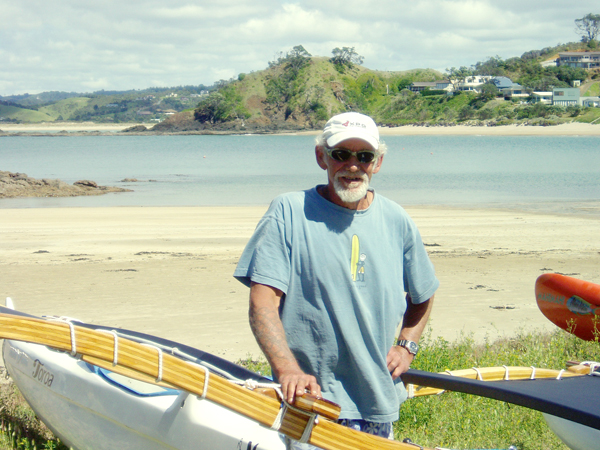 Whangaumu Bay, Tutukaka Coast 2005 - photo Bob Feigel |
Kris Kjeldsen: "For the Tangata Whenua - the people of the land of Aotearoa, the Maori - the paddle symbolises a sense of purpose and direction whilst also affirming their close cultural links with the canoe. All individual Maori ancestry is intrinsically linked with a particular canoe upon which their forebears arrived on the shores of Aotearoa. This provides each person with an essential link back to Hawaiki - and beyond to creation itself. |
|
With canoes costing from $3,000 (for a single canoe) to $9,700 for a basic six man canoe (or $11,500 fully kited), and with paddles from $150 for the basic no-frills model up to around $230 for the kind the competitors use, the sport is not inexpensive . Yet Moana Nui is working to its full capacity with orders increasing each year.
(Please note: those were November 2005 prices. Contact
Moana Nui for their current price list.)
Obituary and other tributes:KJELDSEN, Kris. Sadly on 30 June 2011 surrounded by his family. Loved father and father-in- law of Kapua and Jason; Maui and Jody; Keala, and Alia. Adored Pappy of Kiwa, Thor; Tai Mana and Maiha. A service for Kris will be held in the Ngunguru Sports and Recreational Centre, Kopipi Cres, Ngunguru, on Monday 4 July 2011 at 12 noon, however, doors will be open from 9am for people to speak and say their goodbyes. Following the main service, a private cremation will be held. All communication to The Kjeldsen Family, PO Box 403069, Ngunguru 0154. http://www.moananui.co.nz/www.moananui.co.nz/Thank_you_Everyone.html
|
|
|
Kris Kjeldsen - Waterman and Different Strokes © Robert R. Feigel, 2011 - All Rights Reserved |
|